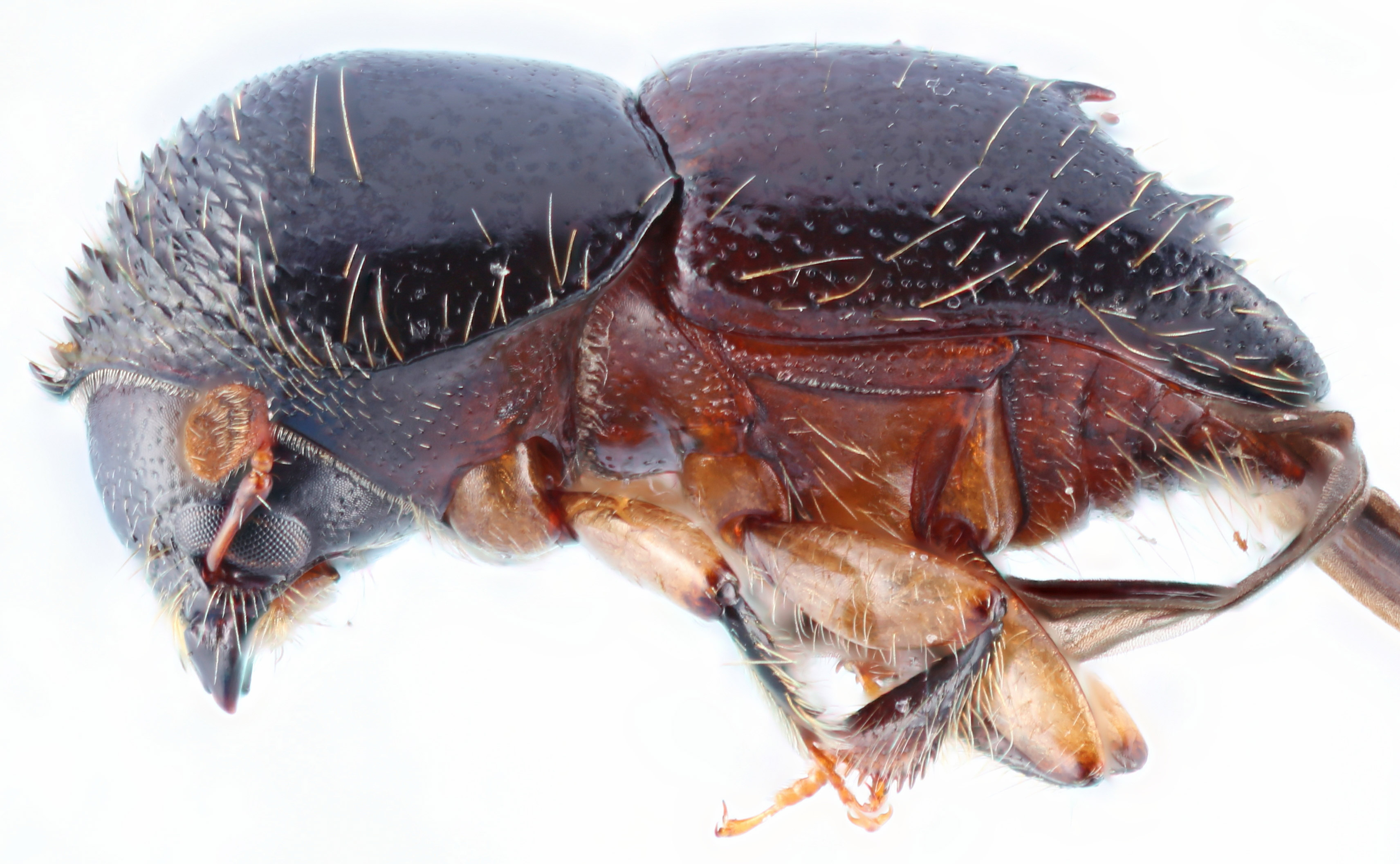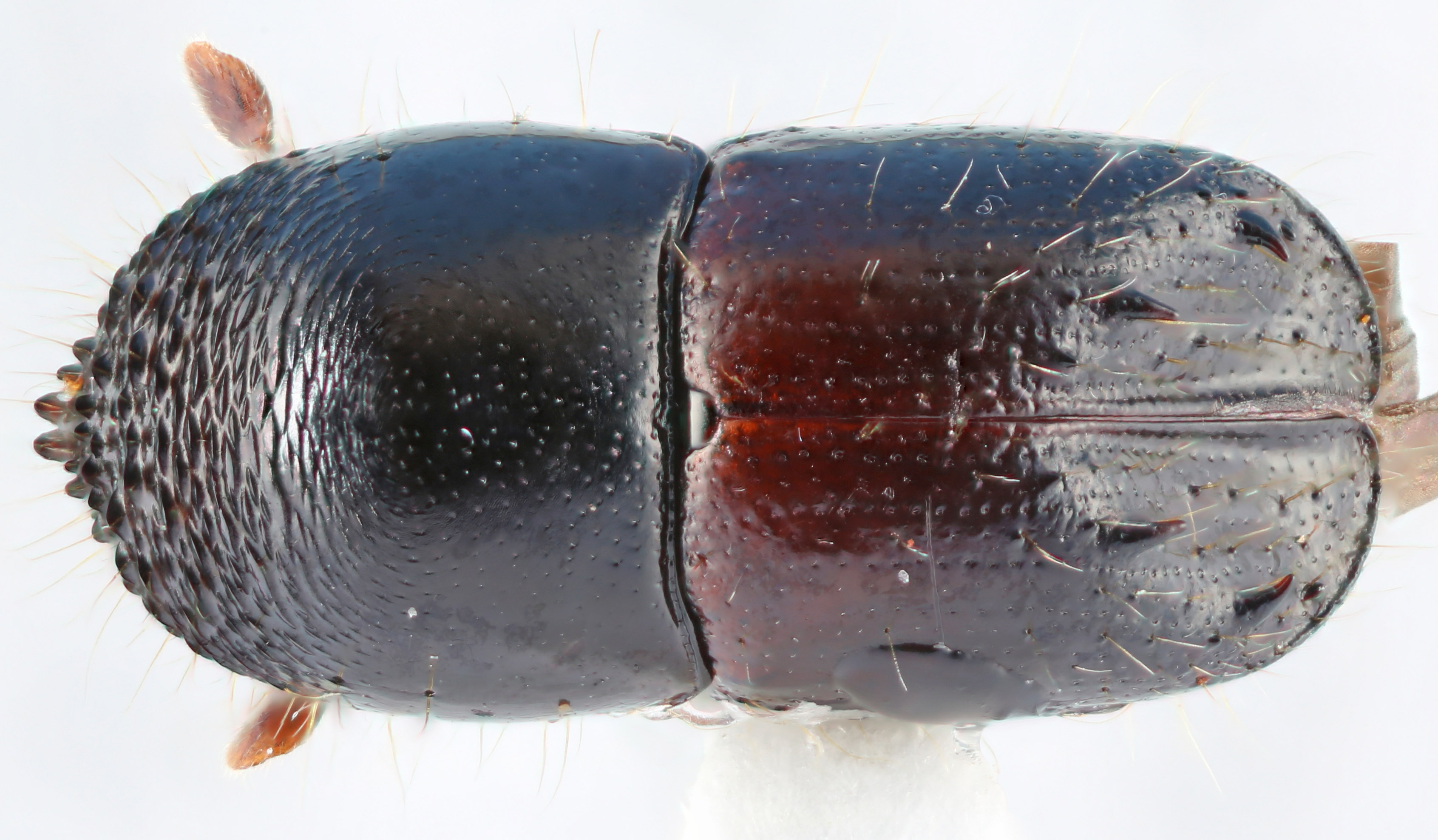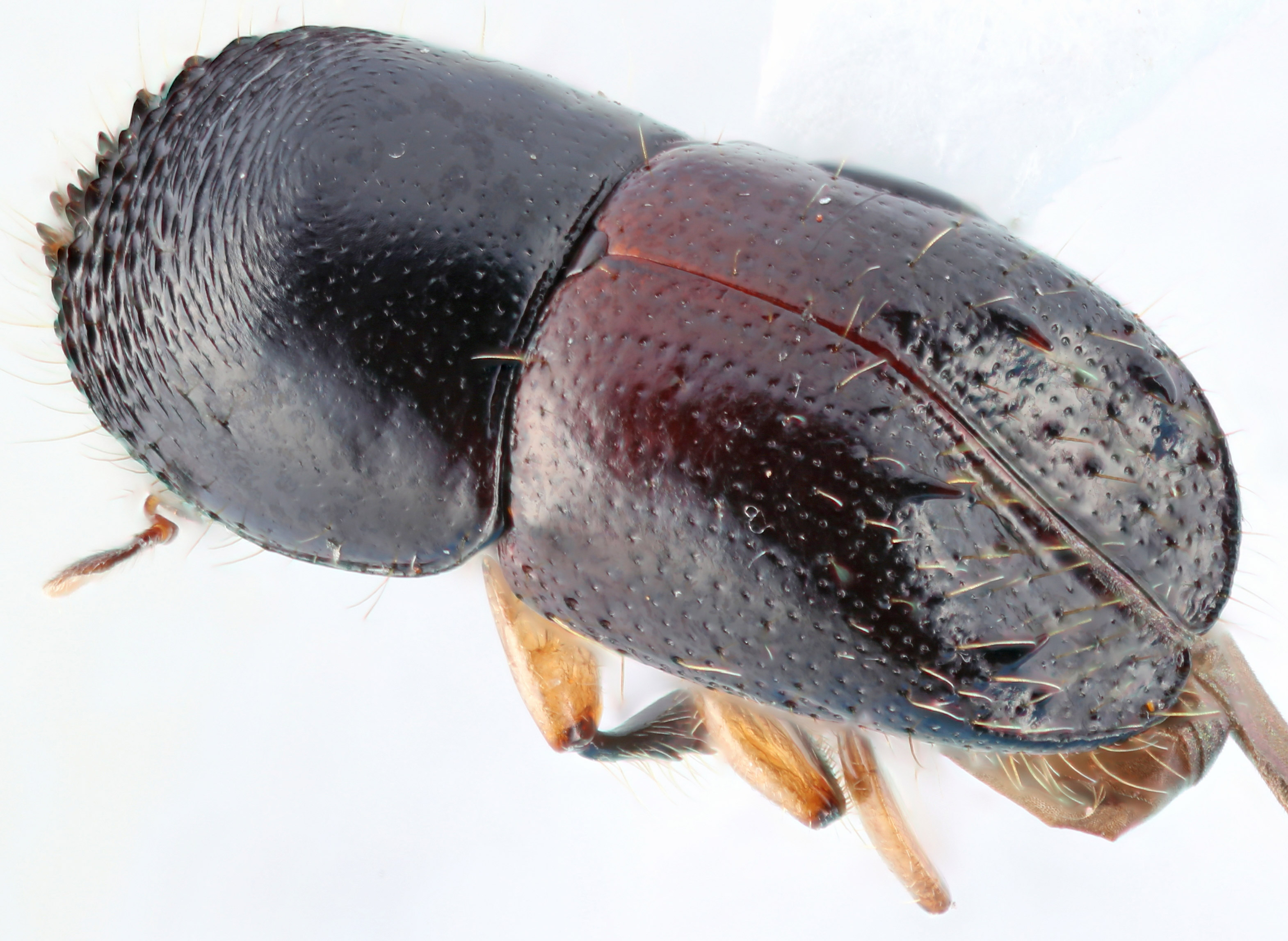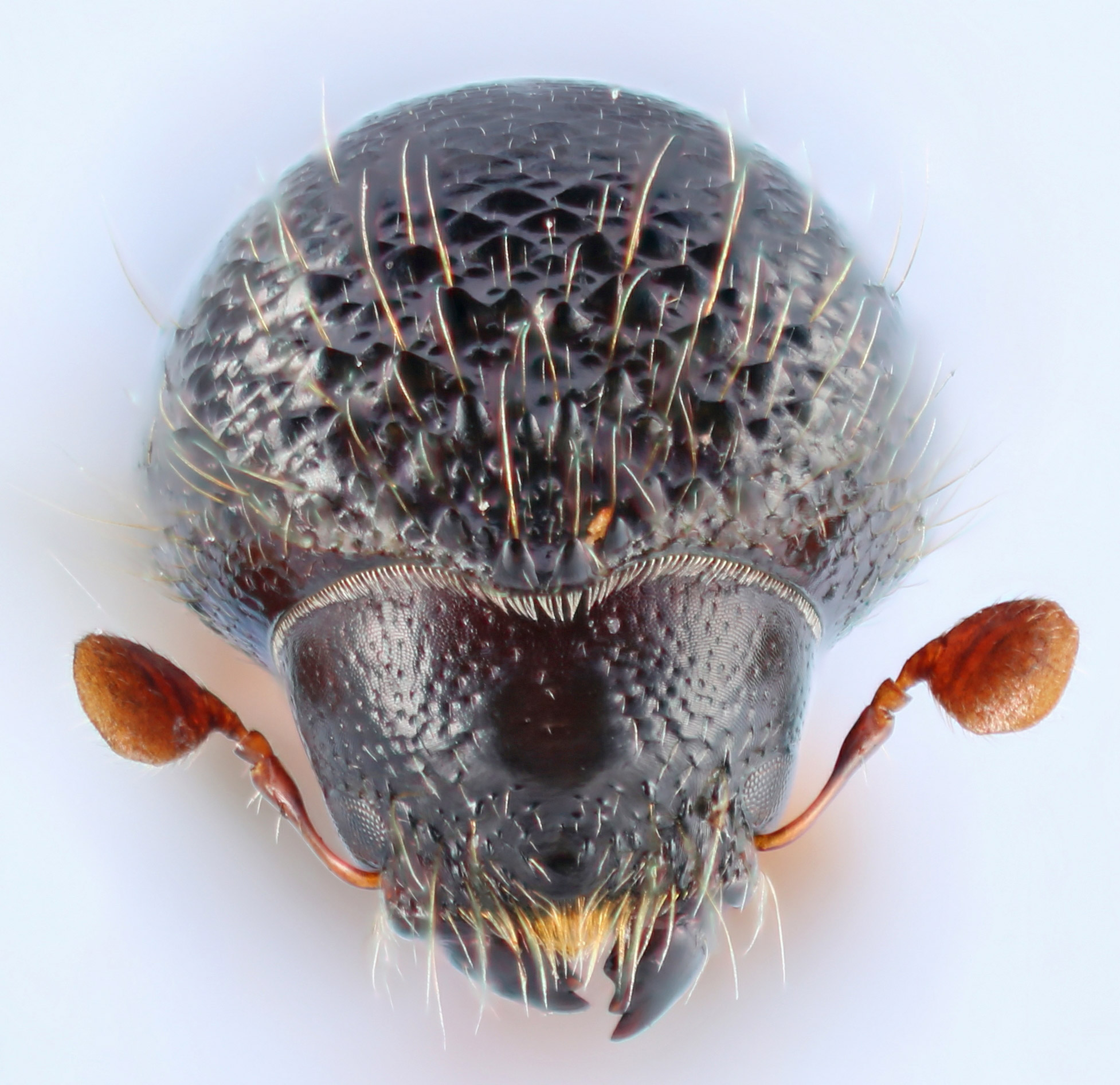Cnestus quadrispinosus
|
Cnestus quadrispinosus paratype lateral; W. Sittichaya |
|
Cnestus quadrispinosus paratype dorsal; W. Sittichaya |
|
Cnestus quadrispinosus paratype declivity; W. Sittichaya |
|
Cnestus quadrispinosus paratype frontal; W. Sittichaya |
Taxonomic history
Cnestus quadrispinosus Sittichaya and Beaver, 2018: 32.
Diagnosis
3.45−4.5 mm long (mean = 4.1 mm; n = 4); 2.2−2.56 times as long as wide (Sittichaya and Beaver 2018Sittichaya and Beaver 2018:
Sittichaya W, Beaver RA. 2018. Cnestus quadrispinosus , a new species of xyleborine ambrosia beetle from Thailand and Borneo (Coleoptera, Curculionidae, Scolytinae, Xyleborini). ZooKeys 795: 31-37. https://doi.org/10.3897/zookeys.795.28384). This species can be distinguished from all other Cnestus by the presence of a four large spinesspine:
an elongate projection of the exoskeleton that is longer than its basal width (two per elytronelytron:
(two per elytronelytron:
the two sclerotized forewings of beetles that protect and cover the flight wings
), one large spinespine:
an elongate projection of the exoskeleton that is longer than its basal width at the declivitaldeclivital:
at the declivitaldeclivital:
pertaining to the elytral declivity
summit on interstriaeinterstria:
longitudinal spaces along the elytra between the striae, which is not as<br />
impressed and bear smaller punctures.
 3 and a second large spinespine:
3 and a second large spinespine:
an elongate projection of the exoskeleton that is longer than its basal width on interstriaeinterstria:
on interstriaeinterstria:
longitudinal spaces along the elytra between the striae, which is not as<br />
impressed and bear smaller punctures.
 5 on the laterallateral:
5 on the laterallateral:
pertaining to the side
 margin of the declivitydeclivity:
margin of the declivitydeclivity:
downward slope of either the pronotum or elytra
 . It can be further distinguished by the absence of a mesonotal mycangial tuftmycangial tuft:
. It can be further distinguished by the absence of a mesonotal mycangial tuftmycangial tuft:
tuft of setae that denotes the mycangia exterior opening
 on the pronotalpronotal:
on the pronotalpronotal:
pertaining to the pronotum
basebase:
point or edge closest to the body; opposite of apex ; elytralelytral:
; elytralelytral:
pertaining to the elytra
declivitydeclivity:
downward slope of either the pronotum or elytra
 unarmed; elongate body; elytralelytral:
unarmed; elongate body; elytralelytral:
pertaining to the elytra
declivitydeclivity:
downward slope of either the pronotum or elytra
 excavated; pronotumpronotum:
excavated; pronotumpronotum:
the dorsal surface of the thorax
from dorsaldorsal:
of or relating to the upper surface; opposite of ventral
 view type 6; pronotumpronotum:
view type 6; pronotumpronotum:
the dorsal surface of the thorax
apexapex:
point or edge furthest from the body; opposite of base
 strongly producedproduced:
strongly producedproduced:
referring to a part of the exoskeleton that is extended, lengthened or elevated
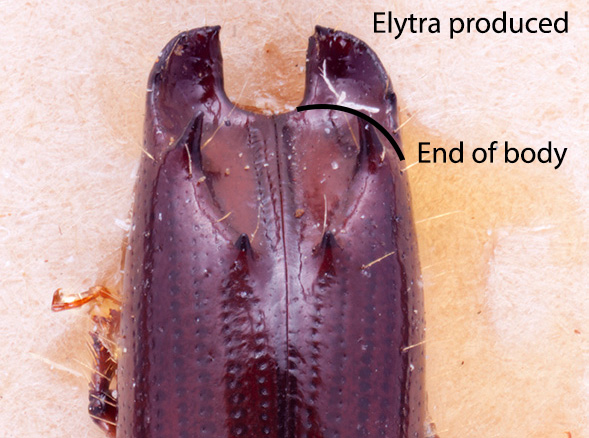 , extending to a process with two serrations; mandibles normal; epistomaepistoma:
, extending to a process with two serrations; mandibles normal; epistomaepistoma:
the sclerotized region of the head above the mandibles and below the frons
entireentire:
without marginal teeth or notches
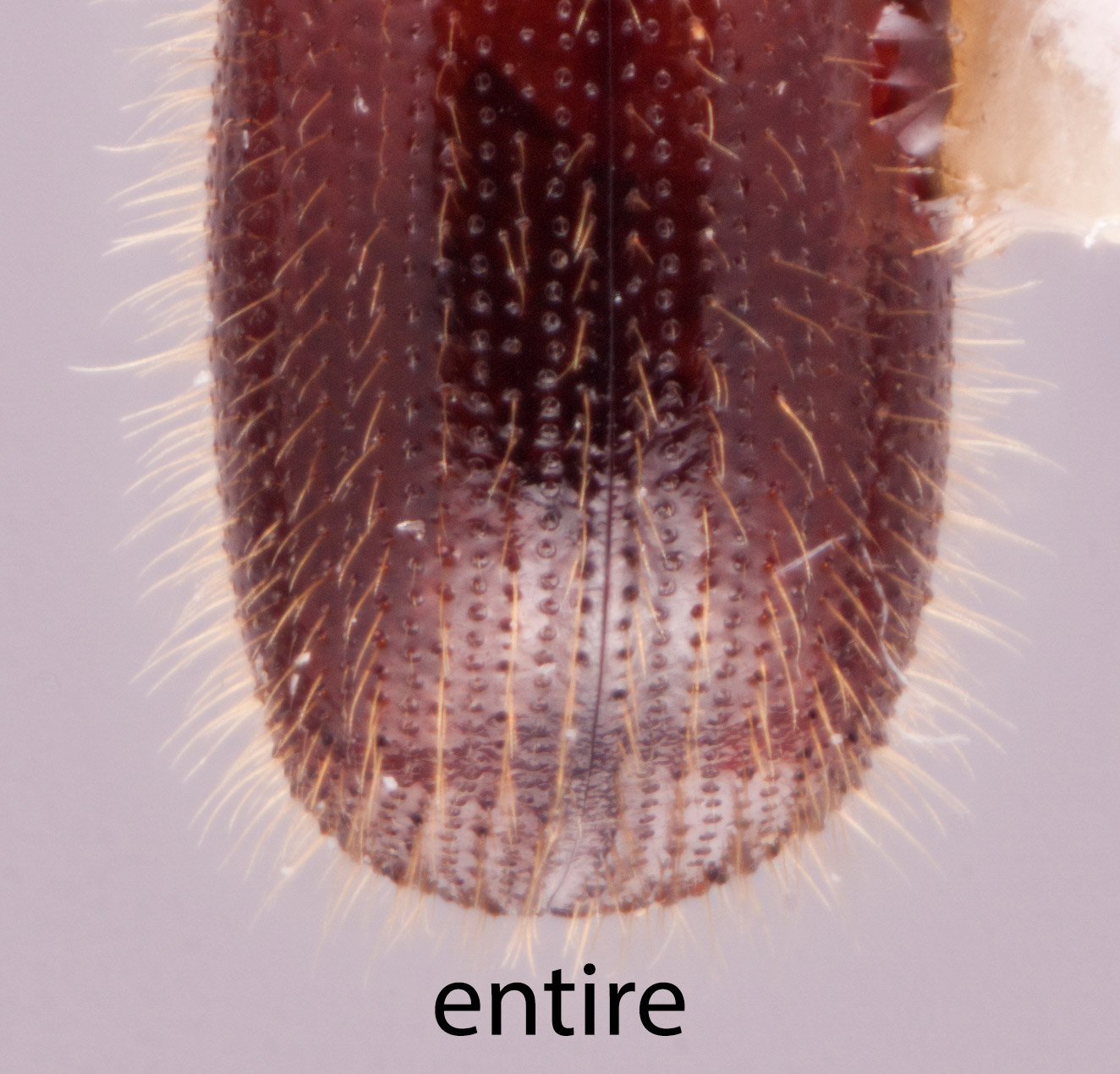 ; elytralelytral:
; elytralelytral:
pertaining to the elytra
punctures distinct, clearly uniseriate; interstriaeinterstria:
longitudinal spaces along the elytra between the striae, which is not as<br />
impressed and bear smaller punctures.
 bearing sparse erecterect:
bearing sparse erecterect:
pertaining to setae that have their apices directed away from the body and appear straight
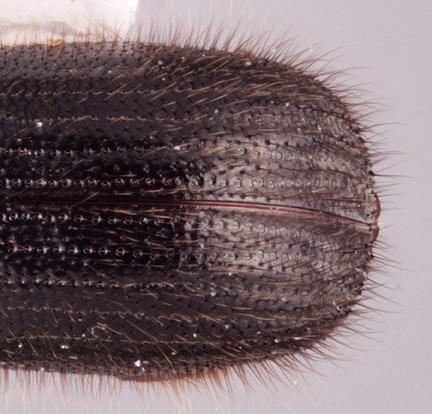 hair-like setae; declivitaldeclivital:
hair-like setae; declivitaldeclivital:
pertaining to the elytral declivity
interstriae 2−5 sparsely denticulatedenticulate:
covered in denticles
; protibiaprotibia:
tibia of the first pair of legs
obliquely triangular very slender with 6−7, narrow denticlesdenticle:
a small tooth, the sides of which are equal and the tip is above the middle of the base on outer margin; antennalantennal:
on outer margin; antennalantennal:
pertaining to the antennae
club type 1, with no sutures visible on the posteriorposterior:
toward the rear end; opposite of anterior
 face; and three segmented antennalantennal:
face; and three segmented antennalantennal:
pertaining to the antennae
funicle.
May be confused with
Cnestus bicornioides and Cnestus bicornis (Eggers) (from Indomalayan region)
Distribution
Brunei, West Malaysia, Thailand
Host plants
unknown but has been collected from dipterocarp forests (Sittichaya and Beaver 2018Sittichaya and Beaver 2018:
Sittichaya W, Beaver RA. 2018. Cnestus quadrispinosus , a new species of xyleborine ambrosia beetle from Thailand and Borneo (Coleoptera, Curculionidae, Scolytinae, Xyleborini). ZooKeys 795: 31-37. https://doi.org/10.3897/zookeys.795.28384)
DNA data
specimens not available for sequencing

